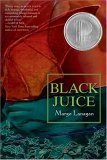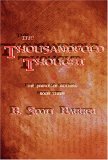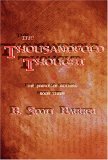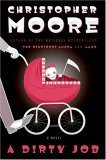
The Forever War is a true classic of science fiction literature written in the mid-1970s. The version I read is the recently published version referred to as the ‘author’s preferred version’. It contains a section that has never been included with the complete book, but has been published as a short story elsewhere, about returning to earth after fighting in the war. To say it clearly, I thoroughly enjoyed this book, both as a classic sci-fi novel, and as a piece of literature relative to world events today, as they were 30 years ago.
The Forever War follows William Mandella from draft to an end in a centuries long war versus the utterly alien Taurans. In the 1990s, humanity discovers a way to travel instantaneously across distances on a galactic scale. People explore, and soon encounter alien life, and the confrontation leads to war. The governing body (an evolution of the United Nations) creates a draft where the smartest, most physical capable people are drafted, and Mandella, a recent Physics graduate, is called up.
Mandella is among the first fighters training for war and part of the first group to encounter the Taurans in a ground fight. The complexities of traveling on galactic scales and at speeds nearing the speed of light lead to relativistic complications. The plain version is that Mandella ages much slower relatively to Earth. He returns to Earth after 2 years in the army, relative to his timeframe, and over 10 have passed on Earth. The Earth is a different planet and society is alien. His inability to adjust leads him back to the army with the woman he loves. The end of the book is literally thousands of years into Mandella’s future.
Haldeman wrote this book in part as a response to the Vietnam War, which he did fight in. It’s easy for war to be condemned or praised by those of us who actually have no experience with it; The Forever War shows the horror of war from someone who was actually there. This book is about the people fighting the war, and what fighting the war does to them. We don’t get to see anything from the top of the command structure, just the view of the grunts getting killed.
In the world today the connection made is not with the Vietnam War, a war of history books to most of us, but to the current events in Iraq, Israel, Afghanistan, and all the various battlefronts of these conflicts. These are the Forever War of our world, and its frightening how little has been learned from mistakes in the past.
Another interesting aspect of the book from the view of our times is the treatment of homosexuality. In the world of The Forever War, population pressures on the human species become immense, and the answer is homosexuality. The ‘future’ is a world where heterosexuality becomes rarer and rarer, and eventually becomes a disorder from which people are ‘cured’ – disturbing echoes of the intolerance of our own world.
The review I’ve written above may lead you to believe that The Forever War is a heavy-handed or even didactic work with no appeal to the casual reader. This would be just plain wrong. The Forever War could easily praised in such capsule phrases as a ‘spectacular tail of humanity in the face of war’ or ‘classic sci-fi – humanity at war with aliens, time travel, love; The Forever War has it all’. Another great aspect of this book is that it comes from an age where SF books could be less than 300 pages and still tell a great story, this is all too rare these days.
On my 10-point scale, where 5 is a take-it or leave-it novel, and 10 is unsurpassed, The Forever War rates quite high with an 8.5. This is a novel from earlier times that is about our times, and one that both genre and non-genre fans should read.
The Forever War follows William Mandella from draft to an end in a centuries long war versus the utterly alien Taurans. In the 1990s, humanity discovers a way to travel instantaneously across distances on a galactic scale. People explore, and soon encounter alien life, and the confrontation leads to war. The governing body (an evolution of the United Nations) creates a draft where the smartest, most physical capable people are drafted, and Mandella, a recent Physics graduate, is called up.
Mandella is among the first fighters training for war and part of the first group to encounter the Taurans in a ground fight. The complexities of traveling on galactic scales and at speeds nearing the speed of light lead to relativistic complications. The plain version is that Mandella ages much slower relatively to Earth. He returns to Earth after 2 years in the army, relative to his timeframe, and over 10 have passed on Earth. The Earth is a different planet and society is alien. His inability to adjust leads him back to the army with the woman he loves. The end of the book is literally thousands of years into Mandella’s future.
Haldeman wrote this book in part as a response to the Vietnam War, which he did fight in. It’s easy for war to be condemned or praised by those of us who actually have no experience with it; The Forever War shows the horror of war from someone who was actually there. This book is about the people fighting the war, and what fighting the war does to them. We don’t get to see anything from the top of the command structure, just the view of the grunts getting killed.
In the world today the connection made is not with the Vietnam War, a war of history books to most of us, but to the current events in Iraq, Israel, Afghanistan, and all the various battlefronts of these conflicts. These are the Forever War of our world, and its frightening how little has been learned from mistakes in the past.
Another interesting aspect of the book from the view of our times is the treatment of homosexuality. In the world of The Forever War, population pressures on the human species become immense, and the answer is homosexuality. The ‘future’ is a world where heterosexuality becomes rarer and rarer, and eventually becomes a disorder from which people are ‘cured’ – disturbing echoes of the intolerance of our own world.
The review I’ve written above may lead you to believe that The Forever War is a heavy-handed or even didactic work with no appeal to the casual reader. This would be just plain wrong. The Forever War could easily praised in such capsule phrases as a ‘spectacular tail of humanity in the face of war’ or ‘classic sci-fi – humanity at war with aliens, time travel, love; The Forever War has it all’. Another great aspect of this book is that it comes from an age where SF books could be less than 300 pages and still tell a great story, this is all too rare these days.
On my 10-point scale, where 5 is a take-it or leave-it novel, and 10 is unsurpassed, The Forever War rates quite high with an 8.5. This is a novel from earlier times that is about our times, and one that both genre and non-genre fans should read.







